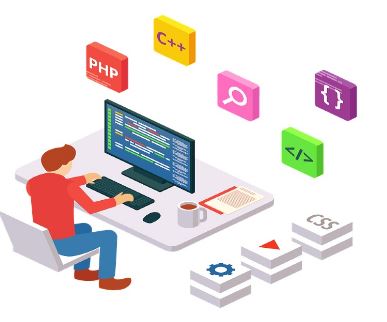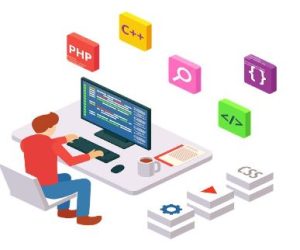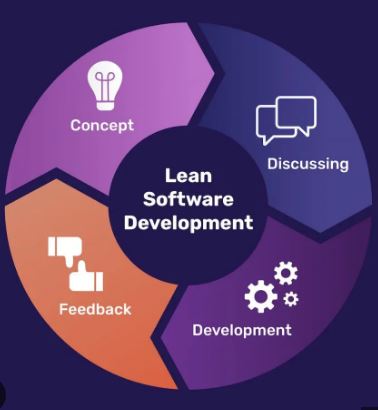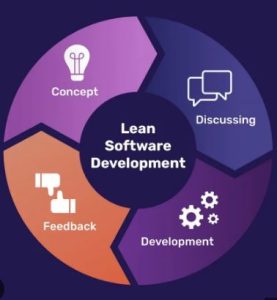Revolutionizing E-Governance
In Official BlogIn the middle of India, where old ways mix with new tools, a city called Raipur is seeing big changes in how it’s run. Jain Software, a big company in the world of technology, is leading this change. They are making online government work better and different from before. In this tech blog, we talk about how Jain Software is changing things for the better in Raipur using their new solutions. This means that rules can be done faster and will make it easier to help people there.
The Foundation of E-Governance
E-governance or the use of technology in government work helps to make services better, clearer and involve people more. It uses things like computers and Internet for running a country’s departments. In Raipur, a city that’s changing with digital technology, Jain Software starting to help run the government through computers is having big effects.
1. Seamless Citizen Services:
Online Service Portals: Jain Software has created easy-to-use websites that let people use many services from home. These websites make it easier to get important papers and apply for permission. They help cut down the need to go somewhere in person.
Digital Payments Integration: Linking safe online money systems lets people easily pay fees, taxes and fines on the internet. This not only makes things easier, but also helps the city’s goals for going digital with money.
2. Transparent and Responsive Governance:
Real-time Information Sharing: Jain Software’s e-governance tools let government departments easily share information in real time. This openness makes things work better together, cuts down on wait time for decisions and gives people the latest news about government plans.
Citizen Feedback Mechanisms: Adding ways for people to give their views lets them tell about what they’ve experienced and offer suggestions on how the government works. This back-and-forth talk creates a feeling of people getting involved and helps leaders fix problems fast.
Jain Software’s Effect on Administrative Productivity.
The way things are managed in Raipur is changing a lot. This change has been possible because Jain Software invented new technology solutions to make work easier and more efficient overall.
1. Integrated Data Management:
Centralized Data Repositories: Jain Software uses big storage places to keep information from different government parts. This connection gets rid of isolated areas, allowing a big picture look at how people talk to each other while making decisions based on information.
Data Analytics for Decision-Making: Using smart data analysis, Jain Software’s tools give helpers important information. These analytics help leaders guess what services are needed and spot trends in people’s behaviors. They use these findings to make smart decisions that improve how they run things like governments.
2. Automation of Routine Processes:
Workflow Automation: Boring and time-wasting paperwork jobs are being done by machines, letting workers in the government spend more time on things that need thought. This not only makes things work better, but also lowers the chance of mistakes in normal tasks.
Document Digitization: Jain Software’s efforts to turn papers into digital files are lessening the need for real paperwork. Computer records are not just safer but also easy to get, which makes decisions quick.
The Importance of Jain Software in Raipur’s Smart City Project.
Raipur wants to be a smart city, which fits perfectly with Jain Software’s promise of new ideas and great technology. Using smart tech for city control shows how progressive it is.
1. IoT for Infrastructure Management:
Smart Infrastructure Monitoring: Jain Software uses the Internet of Things (IoT) to watch and control important parts of infrastructure. These IoT applications, like smart lights for streets and systems that handle waste better. They help the city become more green in how it works while also saving time and money.
Traffic Management Solutions: To fix Raipur’s busy traffic problems, Jain Software uses smart solutions that get real-time data to make the most of car movement. This reduces big roads getting jammed and makes moving around cities better for everyone.
2. Citizen Engagement Platforms:
Mobile Apps for Citizen Services: Jain Software created easy-to-use mobile apps that let people use city services more. These tools help talk about city problems or join community projects, making people feel they are all working together for growth.
Interactive Dashboards: City dashboards that anyone can see show people graphs about city numbers, jobs and plans. This openness makes people want to take part and hold leaders responsible, helping the government work together nicely with its voters.
Overcoming Challenges and Ensuring Security
The change of government to digital form can bring many good things, but it also has problems. These are mainly around keeping data safe and respecting privacy. Jain Software’s way of e-governance in Raipur includes strong safety steps to protect people’s information and make sure the correctness of government operations.
1. Cybersecurity Protocols:
End-to-End Encryption: Jain Software uses a strong code to keep important information safe when it is sent between people and government computers. This makes sure that secret data stays safe from people who should not see it.
Regular Security Audits: Regular checks and assessments are done to find weaknesses and fix them. Acting in advance helps to reduce the chances of data leaks and cyber problems.
2. Privacy by Design:
User Consent Mechanisms: Jain Software’s e-governance solutions put user agreement first. People can decide what information they give out. There are clear rules for giving permission so that personal details are only used in ways people expect them to be.
Compliance with Data Protection Laws: Jain Software makes sure to follow data protection rules very closely. By following the rules, a company helps keep people’s rights safe and also builds trust in how things are done online.
Looking Ahead: A Digital Raipur for All
As Jain Software changes e-governance in Raipur, the goal is clear. They want a city that uses technology well and where people can easily work together with businesses or government to share wealth. Jain Software’s efforts are more than making work easier. They help bring people together, grow money and make Raipur a friendlier place for everyone.
In today’s digital world, where city strength comes from good government technology. Jain Software is leading Raipur towards a future with the help of e-governance which will benefit each person living there. The trip started recently, and as Raipur changes to a smart city Jain Software’s promise of doing great will surely be very important in deciding the fate. The change is happening – welcome to the time of digital Raipur, where tomorrow starts now.










